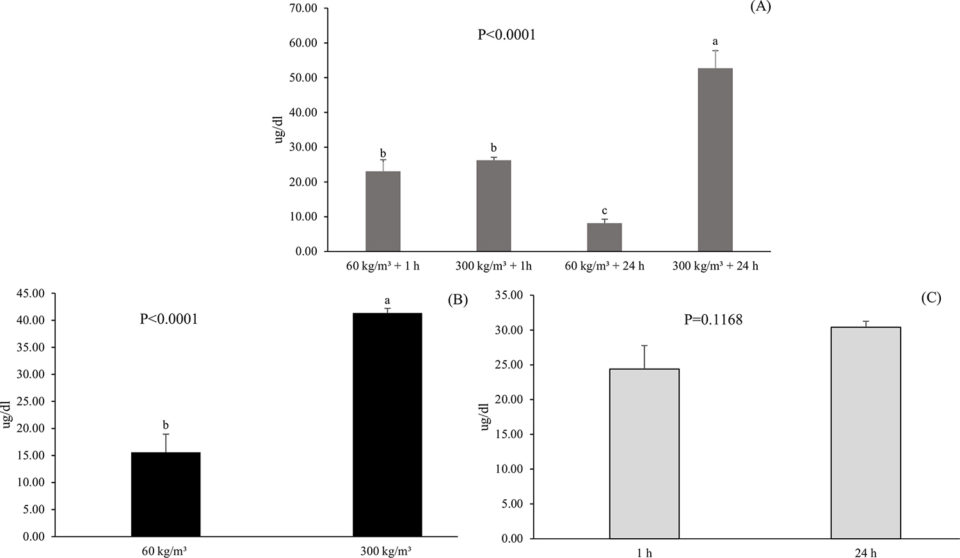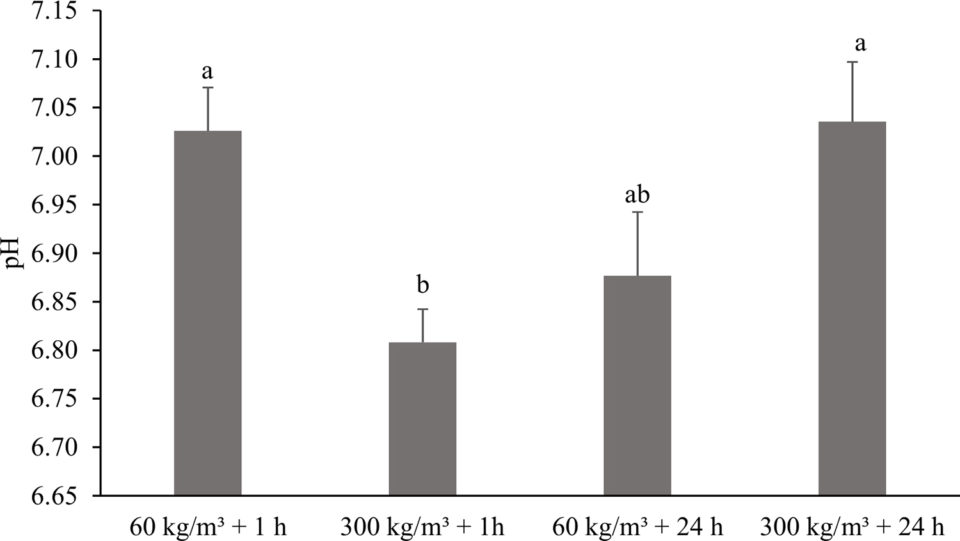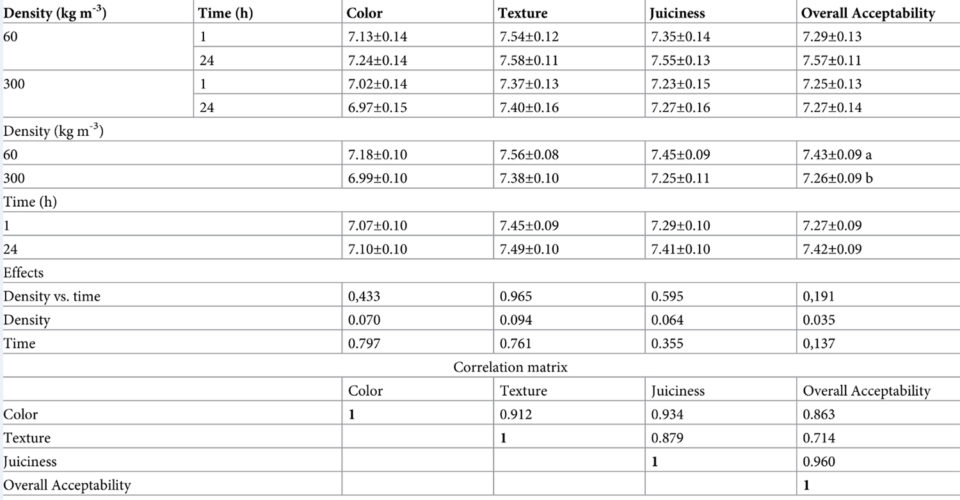
Effect of Pre-Slaughter Stress on Quality of Tilapia Fillets
| Tue, 08 Oct 2019 - 14:04
Stress is a condition of high aerobic energy demand to supply the body’s maintenance mechanisms during activation for adaptation and resistance of the body to stressful conditions. In aquaculture, fish are subjected both to acute stressors, such as handling, and chronic stressors, including environmental changes (such as temperature, water quality and salinity), interactions with other fish and prolonged physical stress (such as transport and increased densities).
When fish are subjected to stress, vigorous swimming increases anaerobic glycolysis, leading to lactic acid production and a consequent decline in muscle pH, which is accompanied by a faster onset of rigor mortis. The combination of stress and intense physical activity at pre-slaughter can increase the degree of protein denaturation and, thus, increase the access of proteolytic enzymes to protein substrates, leading to faster muscle softening, which is detrimental for fish muscle.
In addition to denaturation and proteolysis, muscle proteins also undergo oxidative damage after slaughter and subsequent meat aging. Protein oxidation is responsible for many biological changes, such as protein fragmentation or aggregation and decreased protein solubility, which affects meat quality. Oxidation may also play a role in controlling the proteolytic activity of enzymes and may be linked to meat tenderness.
However, endogenous antioxidant factors, such as enzymes, control oxidation in muscle tissues. Several enzymes can neutralize meat oxidation. A recent study has shown that the activities of these enzymes are significantly lower in pale, soft and exudative (PSE) chicken meat, which makes this type of meat more susceptible to proteolysis and protein oxidation.
Thus, oxidative stress may be an important cell mechanism in the process of meat softening. Oxidative metabolism has also been cited as a potential controlling factor of heat shock proteins (HSPs; a family of proteins produced by cells in response to exposure to stressful environments), especially because it protects structural proteins against oxidative stress and proteolysis, which are essential for tenderness. HSPs can act as molecular chaperones, facilitating protein folding, preventing protein aggregation, or conducting improperly folded proteins into specific degradation pathways, and HSPs also play a role in the refolding of damaged proteins for protection and repair of cells and tissues. A variety of stresses, including oxidative stress, have been linked to increased HSP expression in skeletal muscle.
The relationship between redox imbalance and meat quality in fish subjected to pre-slaughter stress is still unknown. This article – adapted and summarized from the original publication – evaluated the effect of depuration-related oxidative stress on the instrumental and sensory quality of Nile tilapia fillets.
Study setup
Experimental animals were obtained from farming cages in the Corvo River, Diamante do Norte Municipality, Paraná (PR), Brazil. Nile Tilapia of the Tilamax variety (±800 grams) were transported to the UEM/CODAPAR Aquaculture Station in the municipality of Maringá-PR, and stocked into 10-cubic-meter concrete tanks at a density of 5 kg per cubic meter. The fish were kept in these tanks for 40 days to recover from the stress related to transportation and for adaptation of the animals to the experimental structure.
After this period, an experiment was conducted in a 2×2 factorial arrangement using density (60 and 300 kg per cubic meter) and depuration time (1 and 24 hours) as experimental factors with a total of 4 treatments with 20 replicates per treatment (where the fish was the experimental unit).
Initially, the animals were removed from the concrete tanks with the aid of a hand net, and placed in 500-liter polyethylene tanks equipped with water recirculation and an artificial aeration system, and one box was used per treatment. The fish were subjected to the following treatments: 60 kg per cubic meter for 1 hour; 60 kg per cubic meter for 24 hours; 300 kg per cubic meter for 1 hour; and 300 kg per cubic meter for 24 hours. We sampled 20 fish per treatment. Of these, five fish were used for blood, muscle and liver collection for cortisol analysis and gene expression, after which, these animals were euthanized and filleted for meat quality analyzes. Instrumental quality analyzes of fillets were performed on 10 fish per treatment (including animals submitted to blood and tissue samples). Sensory analysis was performed with the remaining 10 fish per treatment. Whole skinless fillets were washed in chlorinated water at 5 ppm, vacuum packed and transported on ice to the laboratory for meat quality analyses.
For detailed information on the experimental design; determination of cortisol levels; evaluation of gene expression, pH, color, tenderness and water-holding capacity analyses; sensory analysis; and statistical analyses, refer to the original publication.
Results and discussion
In fish, acute stress exposure causes rapid elevation of cortisol levels, which are quickly restored to resting levels during recovery from stress. Our results show that the increase in the density of tilapia for a short period of time increased serum cortisol levels regardless of the density being high or low. However, the maintenance of fish at low density allowed recovery from stress over time, which did not occur at high density. In general, plasma cortisol levels increase rapidly after exposure to acute stress, and normal conditions are restored within a few hours.
The maintenance of tilapia at high density for a long period of time apparently led to a chronic stress condition because the cortisol level in fish at a density of 300 kg per cubic meter for 24 hours was higher than the others. High fish densities can affect fish performance and well-being through crowding stress and/or changes in water quality. Chronic stress usually involves changing the energy metabolism to deal with the stressor agent, which significantly affects the immune system of the animal.

Fig. 1: Serum cortisol levels of Nile tilapia at different densities (60 and 300 kg per cubic meter) and depuration times (1 and 24 hours). Effects of the interaction density x depuration time (A) and the individual factors (B and C). Lower case letters indicate a significant difference.
During stress, elevated levels of plasma cortisol mobilize energy stores primarily through genomic actions. In the present study, the expression of the catalase (CAT) and glutathione peroxidase (GPx) enzymes was similar in both liver and muscle. The fish subjected to the lower stocking density and the shortest depuration time had the highest CAT and GPx expression levels. The activity of these enzymes is an important indicator of the activation of the cellular antioxidant defense system and protection against oxidative stress.
Oxidative stress is the imbalance between the production and degradation of oxygen reactive species (ROS), such as superoxide anion, hydrogen peroxide and lipid peroxides. The enzymatic inactivation of ROS in muscle tissue is performed mainly by the superoxide dismutase (SOD), CAT and GPx enzymes. The decrease in enzyme activity may be related to alteration or reduction of gene expression and transcription. In our study, the most stressed animals (at a density of 300 kg per cubic meter) presented lower expression of the CAT and GPx enzymes. Oxidative stress may have led to a decrease in the activity of antioxidant enzymes
The higher stress caused by high density resulted in lower expression of the CAT and GPx enzymes, which may have generated more tender fillets. The oxidative stress was related to the process of meat softening due to greater proteolysis and protein oxidation. Oxidation leads to protein fragmentation or aggregation and decreased protein solubility, which affects meat quality. Protein oxidation may also play a role in controlling the proteolytic activity of enzymes and may be linked to meat tenderness. PSE chicken meat has lower CAT, GPx and SOD activity than normal meats. Other authors have reported that enzymes involved in oxidative stress, such as SOD or peroxiredoxin 6 (PRDX6), are negatively related to tenderness.
Changes in meat tenderness may also be related to the activation of heat shock proteins (HSPs) in the muscle. In our study, animals subjected to high density stress (300 kg per cubic meter) showed higher HSP70 expression and more tender fillets. In response to cell stress, such as hyperthermia, oxidative damage, physical injury or chemical stressors, the expression of HSPs increases dramatically. HSPs delay the rate of muscle aging and decrease the degradation of myofibrillar proteins.
Studies on beef have identified HSPs as biomarkers of meat tenderness, and HSP activity differs between tender and tough meat. The lower activity of HSP70 is associated with higher beef tenderness. In contrast, in our study the fish with higher HSP70 expression (high density = greater stress) produced fillets with a less firm texture. Thus, the higher HSP70 expression was apparently not enough to slow protein oxidation, demonstrating that this is not as efficient in fish as it is in beef.
Another mechanism associated with decreased firmness in fillets may be pH decline. Fish subjected to high density (300 kg per cubic meter) for 1 hour produced fillets with lower pH and shear force. Vigorous swimming under stress conditions leads to intense white muscle use, increasing anaerobic glycolysis and lactic acid production, which leads to a reduction in muscle pH. Slaughtering fish stocked at high density (300 kg per cubic meter) after 1 hour may have resulted in a faster use of glycogen with an increased anaerobic respiration rate, resulting in higher production of lactic acid and lower pH of the meat. The pH decline post-mortem may negatively affect the texture of fillets as it alters protein solubility and increases the proteolysis and denaturation rate.

Fig. 2: pH values of Nile tilapia fillets at different densities (60 and 300 kg per cubic meter) and depuration times (1 and 24 hours). Lower case letters indicate significant difference. Vertical bars indicate standard error of the mean.
High density (300 kg per cubic meter) for 24 hours resulted in higher pH, which may be related to the depletion of glycogen reserves. The intense activity for a long period of time before slaughter causes the fish suffer great wear and can deplete glycogen completely. The high consumption of glycogen by stress and the simultaneous removal of lactic acid by the circulatory system in the living animal would leave it without reserve of glycogen, so that, after death, rigor mortis would proceed without production of lactic acid, with the pH remaining high, resulting in the absence of the pre-rigor phase and a full rigor without decreasing pH, called alkaline rigor mortis.
High-density stress also led to the production of fillets with higher lightness and lower redness. More stressed fish fillets can develop with higher brightness, and changes in color. This may be related to a change in pH caused by stress, which induces a faster denaturation of the protein and therefore a change in the pattern of light reflection in the muscle, an effect established quite early in the rigor process. These hypotheses were corroborated in the present study, which evidenced the relationship between stress arising from higher density and the development of changes in fillet color. Other studies with fish have also reported an increase in lightness after exposure to acute pre-slaughter stress.
Changes in the quality of fish fillets subjected to high density stress resulted in losses in the sensory acceptance of fillets because tilapia at the density of 300 kg per cubic meter presented fillets with less general acceptability. In the correlation analysis, the acceptability was more related to the juiciness of the fillets. A previous study has shown that less stressed tilapia produces meat with higher water holding capacity (WHC), lower water loss by pressure and higher juiciness. In the present study, the lower acceptance may be related to the changes observed in the instrumental quality (greater tenderness, greater lightness and lower redness). In fish, the best quality is firm and cohesive flesh with good water holding capacity. Therefore, excessive fillet tenderness is highly undesirable as it can have a major impact on consumer acceptance.

Table 1. Sensory profile and correlation matrix between the attributes of Nile tilapia fillets at different densities (60 and 300 kg per cubic meter) and depuration times (1 and 24 hours). Hedonic scale between 1 (disliked extremely) and 9 (liked extremely). Data are expressed as the mean ± standard error of the mean.
It should be noted that fish fillets subjected to lower density (60 kg per cubic meter) were more associated with the sensory attributes evaluated, while the fillets from more stressed fish (300 kg per cubic meter) were inversely related to the attributes analyzed as demonstrated by the PCA. Likewise, a previous study with cod has also shown that less stressed fish obtain higher scores on the attributes of general acceptance, texture and juiciness.
Therefore, high density generated oxidative stress, decreased the expression of antioxidant enzymes (CAT and GPx) and increased the expression of HSP70 in tilapia. These changes negatively affected the quality of the fillets, which presented less firm texture, greater lightness, less redness and less sensory acceptability. To our knowledge, these are the first data on the link between redox imbalance and deleterious changes in fish meat quality. These results indicated stress should be controlled in the pre-slaughter period of fish, aiming to improve the quality of the meat and the lives of the animals. Although the maintenance of fish at high density is feasible, it can cause sensory damage to the quality of fish fillets.
Perspectives
High fish stocking density (300 kg per cubic meter) during tilapia pre-slaughter causes lower expression of the CAT and GPx enzymes but higher expression of HSP70, resulting in the production of fillets with higher tenderness, higher lightness, lower redness and decreased sensory acceptability. Based on our results, low density and longer depuration times are recommended for decreased stress and improved quality of tilapia fillets.
Source : Global Aquaculture Alliance






















